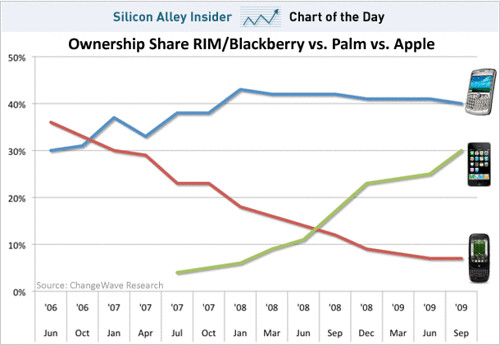
Lt. Aldo Raine: Well, I speak the most Italian, so I’ll be your escort. Donowitz speaks the second most, so he’ll be your Italian cameraman. Omar speaks third most, so he’ll be Donny’s assistant.
Pfc. Omar Ulmer: I don’t speak Italian.
Lt. Aldo Raine: Like I said, third best. Just keep your f*ckin’ mouth shut. In fact, why don’t you start practicing, right now!
via IMDB
Being 3rd can only be seen as a concession. It’s never an actual goal. If you’ve competed in sports you know getting third is because you weren’t the best or even the next best. It’s certainly an achievement particularly in things like the Olympics, but if you are going into a big tournament thinking you’ll only get 3rd place, it’s because you aren’t mentally or physically able to compete for the title. In mobile it looks a little different … no one is even trying for second.
It all seems to have started with this …
Such technology platforms are often called ecosystems, and Mr. Elop described Nokia’s strategy in those terms. Mobile network operators, likeAT&T and Verizon, would welcome more smartphone competition. “They want a third ecosystem,” Mr. Elop said.
Nokia competes with other handset makers, like Samsung, HTC and LG. But Mr. Elop made it clear that was not his greatest concern.
“The highest priority for us is to beat Android and Apple,” he said. “This is an ecosystem to ecosystem battle.” [NYT NOVEMBER 8, 2011]
An interesting perspective and clearly now, over a year later there’s still a rather MASSIVE road ahead to even come close. However an interesting thing happened along the way …First in January:
BlackBerry, formerly Research in Motion, has made no secret that it’s got its eye on the bronze medal of the smartphone market, behind Apple’s iOS and Google’s Android. Taking on either of the big two would be an impossible, demoralizing goal for the once-dominant Canadian smartphone maker, but holding on as a solid third choice is an achievable goal. [Washington Post Feb 7,2013]
And now in March:
Sony Corp said it aims to win third place in smartphone markets around the world behind Apple Inc and Samsung Electronics Co, pitting it against Chinese companies Huawei Technology and and ZTE that are looking to become the third big player in mobile devices. [Reuters March 4, 2013]
Granted Sony and Blackberry are talking about the exact same thing since Blackberry believes it’s really selling an ecosystem and they are vs Sony which is offering an Android powered smartphone.
So who has the likeliest chance of success? All bets are off once Huawei takes the crown for first of course.


